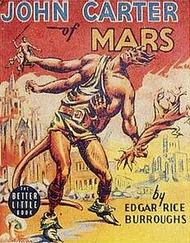Andrew Lang - John Knox and the Reformation
Здесь есть возможность читать онлайн «Andrew Lang - John Knox and the Reformation» — ознакомительный отрывок электронной книги совершенно бесплатно, а после прочтения отрывка купить полную версию. В некоторых случаях можно слушать аудио, скачать через торрент в формате fb2 и присутствует краткое содержание. Жанр: foreign_antique, foreign_prose, на английском языке. Описание произведения, (предисловие) а так же отзывы посетителей доступны на портале библиотеки ЛибКат.
- Название:John Knox and the Reformation
- Автор:
- Жанр:
- Год:неизвестен
- ISBN:нет данных
- Рейтинг книги:4 / 5. Голосов: 1
-
Избранное:Добавить в избранное
- Отзывы:
-
Ваша оценка:
- 80
- 1
- 2
- 3
- 4
- 5
John Knox and the Reformation: краткое содержание, описание и аннотация
Предлагаем к чтению аннотацию, описание, краткое содержание или предисловие (зависит от того, что написал сам автор книги «John Knox and the Reformation»). Если вы не нашли необходимую информацию о книге — напишите в комментариях, мы постараемся отыскать её.
John Knox and the Reformation — читать онлайн ознакомительный отрывок
Ниже представлен текст книги, разбитый по страницам. Система сохранения места последней прочитанной страницы, позволяет с удобством читать онлайн бесплатно книгу «John Knox and the Reformation», без необходимости каждый раз заново искать на чём Вы остановились. Поставьте закладку, и сможете в любой момент перейти на страницу, на которой закончили чтение.
Интервал:
Закладка:
Meanwhile Knox is more than willing to run the risks of the preacher of the truth, “partly because I would, with St. Paul, wish myself accursed from Christ, as touching earthly pleasures” (whatever that may mean), “for the salvation of my brethren and illumination of your Grace.” He confesses that the Regent is probably not “so free as a public reformation perhaps would require,” for that required the downcasting of altars and images, and prohibition to celebrate or attend Catholic rites. Thus Knox would, apparently, be satisfied for the moment with toleration and immunity for his fellow-religionists. Nothing of the sort really contented him, of course, but at present he asked for no more.
Yet, a few days later, he writes, the Regent handed his letter to the Archbishop of Glasgow, saying, “Please you, my Lord, to read a pasquil,” an offence which Knox never forgave and bitterly avenged in his “History.”
It is possible that the Regent merely glanced at his letter. She would find herself alluded to in a biblical parallel with “the Egyptian midwives,” with Nebuchadnezzar, and Rahab the harlot. Her acquaintance with these amiable idolaters may have been slight, but the comparison was odious, and far from tactful. Knox also reviled the creed in which she had been bred as “a poisoned cup,” and threatened her, if she did not act on his counsel, with “torment and pain everlasting.” Those who drink of the cup of her Church “drink therewith damnation and death.” As for her clergy, “proud prelates do Kings maintain to murder the souls for which the blood of Christ Jesus was shed.”
These statements were dogmatic, and the reverse of conciliatory. One should not, in attempting to convert any person, begin by reviling his religion. Knox adopted the same method with Mary Stuart: the method is impossible. It is not to be marvelled at if the Regent did style the letter a “pasquil.”
Knox took his revenge in his “History” by repeating a foolish report that Mary of Guise had designed to poison her late husband, James V. “Many whisper that of old his part was in the pot, and that the suspicion thereof caused him to be inhibited the Queen’s company, while the Cardinal got his secret business sped of that gracious lady either by day or night.” 64 64 Knox , i. 92.
Конец ознакомительного фрагмента.
Текст предоставлен ООО «ЛитРес».
Прочитайте эту книгу целиком, купив полную легальную версию на ЛитРес.
Безопасно оплатить книгу можно банковской картой Visa, MasterCard, Maestro, со счета мобильного телефона, с платежного терминала, в салоне МТС или Связной, через PayPal, WebMoney, Яндекс.Деньги, QIWI Кошелек, бонусными картами или другим удобным Вам способом.
1
Inventories of Mary, Queen of Scots, p. cxxii., note 7.
2
Hume Brown, John Knox , ii. 320-324.
3
Probably Mrs. Knox died in her son’s youth, and his father married again. Catholic writers of the period are unanimous in declaring that Knox had a stepmother.
4
Knox , Laing’s edition, iv. 78.
5
See Young’s letter, first published by Professor Hume Brown, John Knox , vol. ii. Appendix, 320-324.
6
Laing, in his Knox , vi. xxi. xxii.
7
Knox , i. 36-40. The facts are pointed out by Professor Cowan in The Athenæum , December 3, 1904, and had been recognised by Dr. Hay Fleming.
8
Beza, writing in 1580, says that study of St. Jerome and St. Augustine suggested his doubts. Icones Virorum Doctrina Simul ac Pietate Illustrium.
9
Pollen, Papal Negotiations with Mary Stuart , 428-430, 522, 524, 528.
10
Knox , vi. 172, 173.
11
Letter of Young to Beza. Hume Brown, John Knox , ii. 322-24.
12
Cf. Life of George Wishart , by the Rev. Charles Rodger, 7-12 (1876).
13
Maxwell, Old Dundee , 83, 84.
14
M‘Crie’s Knox , 24 (1855).
15
“Letter to the Faithful,” cf . M‘Crie, Life of John Knox , 292.
16
Knox , vi. 229.
17
M‘Crie, 292.
18
Dr. Hay Fleming has impugned this opinion, but I am convinced by the internal evidence of tone and style in the tract; indeed, an earlier student has anticipated my idea. The tract is described by Dr. M‘Crie in his Life of Knox , 326-327 (1855).
19
Most of the gentry of Fife were in the murder or approved of it, and the castle seems to have contained quite a pleasant country-house party. They were cheered by the smiles of beauty, and in the treasurer’s accounts we learn that Janet Monypenny of Pitmilly (an estate still in the possession of her family), was “summoned for remaining in the castle, and assisting” the murderers. Dr. M‘Crie cites Janet in his list of “Scottish Martyrs and Prosecutions for Heresy” ( Life of Knox , 315). This martyr was a cousin, once removed, of the murdered ecclesiastic.
20
Knox , Laing’s edition, i. 180.
21
Knox , i. 182. “The siege continued to near the end of January.” “The truce was of treacherous purpose,” i. 183.
22
Knox , i. 203-205.
23
Thorpe’s Calendar , i. 60; Register Privy Council , i. 57, 58; Tytler, vi. 8 (1837).
24
State Papers , Scotland, Thorpe, i. 61.
25
Bain, Calendar of Scottish Papers , 1547-69, i. I; Tytler, iii. 51 (1864).
26
Bain i. 2; Knox , i. 182, 183.
27
For the offering of the papal remission to the garrison of the castle before April 2, 1547, see Stewart of Cardonald’s letter of that date to Wharton, in Bain’s Calendar of Scottish Papers , 1547-69, i. 4-5.
28
John Knox , i. 80.
29
State Papers , Domestic. Addenda, Edward VI., p. 327. Lord Eure says there were twenty galleys.
30
Odet De Selve, Correspondence Politique , pp. 170-178.
31
Knox , i. 201.
32
Leonti Strozzio , incolumitatem modo pacti , se dediderunt , writes Buchanan. Professor Hume Brown says that Buchanan evidently confirms Knox; but incolumitas means security for bare life, and nothing more. Lesley says that the terms asked were life and fortune, salvi cum fortunis , but the terms granted were but safety in life and limb, and, it seems, freedom to depart, ut soli homines integri discederent . If Lesley, a Catholic historian, is right, and if by discederent he means “go freely away,” the French broke the terms of surrender.
Читать дальшеИнтервал:
Закладка:
Похожие книги на «John Knox and the Reformation»
Представляем Вашему вниманию похожие книги на «John Knox and the Reformation» списком для выбора. Мы отобрали схожую по названию и смыслу литературу в надежде предоставить читателям больше вариантов отыскать новые, интересные, ещё непрочитанные произведения.
Обсуждение, отзывы о книге «John Knox and the Reformation» и просто собственные мнения читателей. Оставьте ваши комментарии, напишите, что Вы думаете о произведении, его смысле или главных героях. Укажите что конкретно понравилось, а что нет, и почему Вы так считаете.











